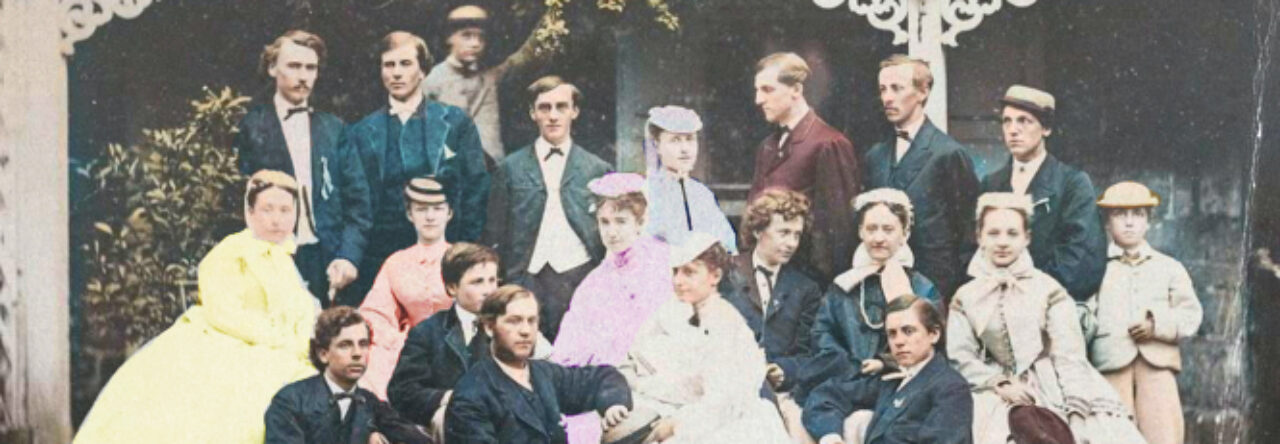
Doodle appended to the end of an 1852 class oration by William Snively, courtesy of Dickinson College Archives & Special Collections (digitized by Ian Ridgway)


Doodle appended to the end of an 1852 class oration by William Snively, courtesy of Dickinson College Archives & Special Collections (digitized by Ian Ridgway)
Objective
This sample offers a rough guideline for how Multi-Media projects can be organized within the course site. It provides a simple model for an easy-to-follow navigation, built by connecting standard WordPress posts.
By Benjamin Rush, a patriot
Audience: AP US History classes and introductory level undergraduate history surveys and methods courses
Project Elements
Credits & Acknowledgements: mmmmmmmmmmmmmmmmm
Due Date
Objective
Students in History 204 should create a short entry in their research journal (about 600-800 words, or 3-4 pages) that documents how they used Ancestry.com and other reference sources to help launch their investigation of their assigned Dickinson College class of students (1840-1880).
Grading
Guidelines
Reminders
Adapted from a recent post at Blog Divided:
It was bound to happen sooner or later. Last week, sadly, we discovered that there was a forged document in the House Divided research engine. David Gerleman from the Papers of Abraham Lincoln contacted us to point out that a letter supposedly written by Abraham Lincoln to Georgia politician (and future Confederate Vice President) Alexander Stephens, dated January 19, 1860, was a known Lincoln forgery. The letter (since removed) was full of memorable and sometimes unLincolnian statements about the sectional crisis and ended with the line: “This is the longest letter I ever dictated or wrote.” Since Lincoln was not in the habit of dictating anything at all (especially in those pre-presidential days), this was a document that should have set off warning bells. But it was published as part of a pamphlet that had been produced during the centennial of Lincoln’s birth in 1909 and even now remains in wide circulation on the Internet and elsewhere. A recent scholarly article in the Tulane Law Review by John Inazu (“The Forgotten Freedom of Assembly” 2010) even began by quoting from it. Yet there was no such exchange with Stephens. For a full discussion of the problems with the alleged January 19, 1860 document, see the article, “Four Spurious Lincoln Letters” in the Bulletin of the Abraham Lincoln Association 21 (Dec. 1930): 5-9, available online here). You can view the text of the forged document at the Internet Archive (where we apparently found it) inside a pamphlet edited by noted Lincoln collector Judd Stewart and entitled, Some Lincoln Correspondence with Southern Leaders Before the Outbreak of the Civil War (1909). Stewart was one of the so-called “Big Five” of early Lincoln collectors and was careless enough to fall victim to these types of scams (his collection, stripped of several other faked items, is now housed at the Huntington Library in California). During the decades after Lincoln’s assassination, there was practically a land office business in Lincoln forgeries, and their ripple effects are still being felt today. I exposed one of these problems in 1999 when actor Warren Beatty and journalist Jonathan Alter used a phony Lincoln quotation about the evils of big corporations that had originally been ginned up during the Populist era and continues to be quoted and re-quoted today despite numerous debunkings. History News Network reprinted the piece in 2005 when author Kevin Phillips and historian Paul Kennedy both made the same mistake of admiring a Lincoln who sounded suspiciously like William Jennings Bryan. What’s the lesson in all this for teachers and students? Check your sources. We never should have used a 1909 pamphlet for a Lincoln document when the Collected Works of Abraham Lincoln (8 vols., 1953; 1974, 1990) is the current gold standard in Lincoln’s writings (though the online Papers of Abraham Lincoln, where Gerleman works, will soon become the new AAA-rated repository for all things Lincolniana). And always remember, when a story or document seems too “good” to be true … it just very well might be.
Powered by WordPress & Theme by Anders Norén